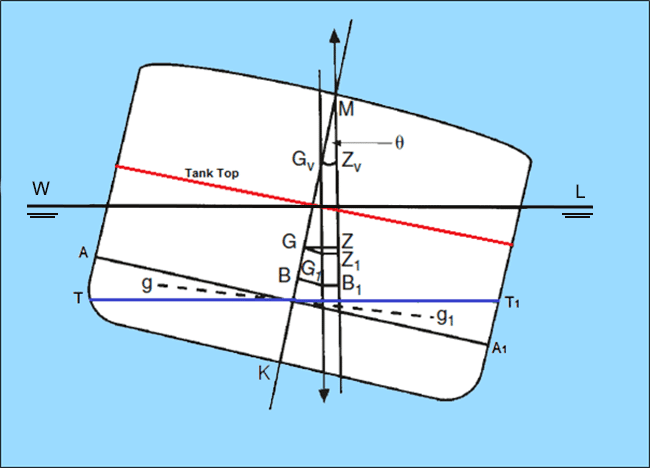
Stephen Chamberlain, recently acquitted of fraud in the US, died after being hit by a car on Saturday, 17 August. The other defendant in the trial, Mike Lynch, died when his yacht sank the following Monday. Understandably, many people cried foul and sought explanation in a conspiracy.
Mr Chamberlain’s death happened when he was out jogging after being hit by a car driven by a 47-year-old woman from Buckinghamshire, on the A1123 in Cambridgeshire. He died later in hospital. According to the police the driver of the car remained at the scene of the accident and has assisted the police, who have appealed for witnesses. If that’s it there seems little scope for a conspiracy interpretation, unless the woman involved was an agent of the deep state or some sinister corporation, which at best seems far-fetched.
Mr Lynch died when his yacht BAYESIANsank off Sicily in a sudden, violent storm with 22 persons on board, of whom 15 were rescued, generating a great deal of speculation and, as usual, the usual journalistic misunderstanding of alleged experts.
Here I should point out that though I am a qualified and experienced marine casualty investigator, I have no experience of sailing yachts. That said, the principles of ship stability and hydrodynamics are universal.
BAYESIAN was built in Italy in 2008 with a length of 56m to carry a crew of ten and twelve passengers. One aspect of her design her mast, until recently the tallest of its type in the world at 72m, has attracted a lot of interest. It has been speculated that its length, exposed to the very strong winds, could have somehow caused BAYESIAN to capsize. This is most unlikely as it would have been of roughly (small) circular cross section and therefore with low wind resistance, making unlikely that wind load on the mast would have caused a significant problem.
The yacht had a retractable keel or centreboard, an aerodynamically shaped ‘fin’ that can be lowered from the bottom of the hull to give the yacht additional stability and improve performance. Such keels serve two main purposes: counteracting the force of the wind pushing the boat sideways and providing ‘ballast’ to keep the boat upright. Modern passenger ships have something similar, opening from the sides, to keep the passengers from being sick.
The keel was ‘partially retracted’ according to reports. Fully lowered it has an in-water depth of 10m (roughly 30 foot) giving an indication of the forces it is designed to counteract. Raised, its in-water depth is said to be 4m, leaving a still considerable area to provide resistance to lateral movement.
BAYSIAN would have had all of the information on board to calculate stability at all possible conditions of loading and, given that the loaded condition of a yacht does not change too much, it is possible that even with the keel retracted, there was sufficient stability in reserve for just about all possible conditions of loading (fuel, provisions, water, passengers) and normal sea conditions. Possibly, the keel is usually only fully lowered underway at sea. We will have to wait until the investigation is complete to find out, unless there are some yacht designers or skippers in the house.
I can’t resist a short lesson on ship stability. Skip it if you like. It is complicated, but the diagram below explains it all.

Stability depends on the relative positions of the centres of gravity (G), and buoyancy (B) and the change in B when a ship tilts or heels. Very much simplified, the new centre of buoyancy is known as the metacentre (M) and the distance between G and M (GM) is a crucial factor in how a ship or boat reacts to external stimuli such as wind and wave.
Equilibrium is a basic concept in a ship’s stability and there are three types, depending on the relation between the positions of G, B and M: 1. stable equilibrium, achieved when the vertical position of G is lower than M which means that if the ship heels there is a righting lever to force her back to her original upright position and; 2. unstable equilibrium, caused when the vertical position of G is higher than M and therefor with a negative righting lever, resulting in a further heel until a condition of stable equilibrium is reached. If this is not achieved by the time the edge of the deck is immersed, the ship can capsize. The third, neutral equilibrium occurs when the vertical position of G coincides with M and no righting lever is generated at any angle of the heel. If there is a change in weight due to something moving or water ingress, a condition of unstable equilibrium can occur. Obviously, something happened to change the yacht’s stability from condition one to two or three.
BAYESIAN was designed to remain in stable equilibrium at all foreseeable conditions of loading. I am not sure what effect retracting the keel would have had, but it probably reduced GM, thus making her theoretically less safe if damaged and partially flooded. A vessel with a high GM rolls more and is less comfortable for passengers.
However, it is highly unlikely that retracting the keel would result in a condition of unstable equilibrium and, assuming that nothing significant was changed when she was refurbished, some force or combination of forces must have acted on the yacht to cause her to capsize.
The weather was very bad and are reports of tornadic waterspouts. BAYESIAN received regular highly detailed weather reports especially constructed for mariners giving details of expected wind velocity and sea state. I have not seen these reports but a predicted wind of Beaufort Force Five has been mentioned – a fresh breeze with winds of 24-29 mph generating moderate waves, a condition BAYSIAN would take in her stride, almost certainly with her keel retracted.
But a sudden strike by a tornadic waterspout is a very different matter. Spouts are an inverted cone with a suction mouth at sea level typically around 50-60m diameter, about the same length as BAYESIAN, so it is possible for her alone to have come into contact with one. Waterspouts do not suck up water, but can raise the sea locally up to a metre or so.
We now enter the realms of speculation, as very little is known about the yacht’s final moments. A tornado is unlikely to have generated very large waves, but if part of a bigger storm, and the skipper of a nearby yacht referred to ‘hurricane gusts’, it is likely that there were at least short, sharp waves causing BAYESIAN to roll, heave and pitch.
If she was hit by a wave side on while her stern end was low in the water the yacht could have been ‘pooped’ - her aft end submerged in water. A similar situation could arise if the anchor chain came up taut coincident with a wave strike or sudden rise in sea level caused by a waterspout. Like pooping, if the edge of her main deck was submerged buoyancy goes, stability goes, and over you go. And if water got into the hull, it could all happen very quickly.
As well as a door or porthole being left open, as has been speculated, something heavy could have broken loose, either on deck or internally and punctured the hull or deck allowing water to enter. In such circumstances the crew would have had little time to react.
There are other questions that need to be answered; had the crew taken proper precautions like battening down and closing all doors and portholes? Were they keeping a proper watch? There should have been an anchor watch monitoring the BAYSIAN’s position in case the anchor dragged. Arguably, they should have been running the engine to take the weight off the anchor. But given the absence of facts, it is not yet worth speculating on these questions.
So, could the sinking have somehow been planned or pre-arranged? I doubt it; not even the combined power of the CIA, FBI and MI5 can arrange for tornados to turn up by command. Can they?
The only possibility I can see of there being something sinister involved is if the yacht’s senior crew deliberately sank her, after waiting for an opportunity. But really? If they had wanted to do that, they could have done it at sea, in deep water away from land and prying eyes. And they could made sure that all witnesses went down with the yacht. Instead, there are 15 people to give evidence on what happened. So no, this was almost certainly an accident, based on the available evidence.
And what possible motive was there for a conspiracy to kill Chamberlain and Lynch? Revenge by Hewlett Packard for losing their fraud claim? I’m no fan of HP, but really? Nevertheless, this is where it gets really interesting, conspiracy or, more likely, no conspiracy.
BAYSIAN was named after the 18th Century British mathematician (Reverend) Thomas Bayes, whose law gives a mathematical rule for inverting conditional probabilities, making it possible to find the probability of a cause given its effect, on which Lynch did his PhD thesis.
And this led on to his later career. Everybody now knows of his company Autonomy and the subsequent court case, but it is his later enterprises that are of real interest, especially the formation of Invoke and its connection with Darktrace, awarded a Queen’s Award to Industry in 2016 and a multi-million-pound contract with the British government in 2018. 
(One of Darktrace’s ‘technology partners’ was in the news recently when Crowdstrike failed, crashing a large chunk the internet.)
Darktrace says it uses AI to counter ‘stealthy and sophisticated cyber-threats’, though there is very little information about this on the government’s website. According to Darktrace’s website, its algorithm works “by learning the ‘pattern of life’ of each user and device across the entire digital infrastructure. Using this evolving understanding of ‘normal’, Darktrace spots emerging threats and autonomously responds to in-progress attacks before they do damage.”
Interestingly, the technology used was developed by researchers at Cambridge University together with former MI5 and the UK's intelligence, security and cyber agency (GCHQ) specialists. Apart from Lynch and Chamberlain, other senior personnel at Darktrace are Jonathan Evans, the former MI5 director-general and ex-CIA technology specialist Alan Wade.
Now we would all like to think that the UK government is deploying such technology against external enemies and to prevent terrorist attacks, but given the totalitarian aspirations made evident in recent weeks, you don’t need to be a fevered conspiracy theorist to wonder if Darktrace is not also being deployed against British citizens it considers a threat. And there can be no doubt who that means can there?
So maybe, as a device user, the State is busy analysing your’ pattern of life’.